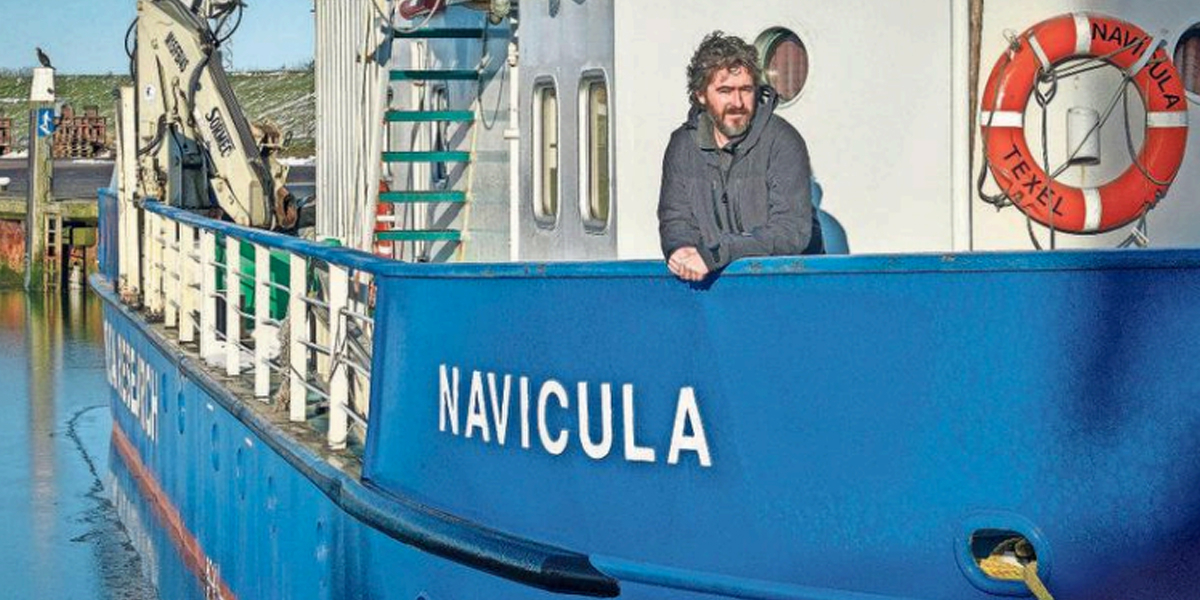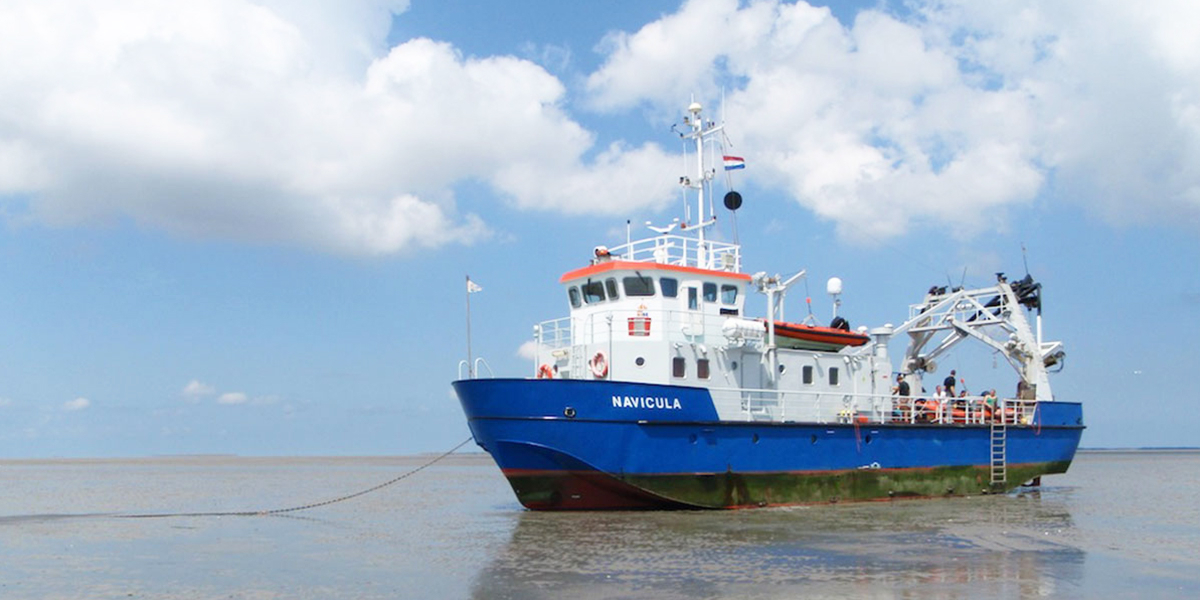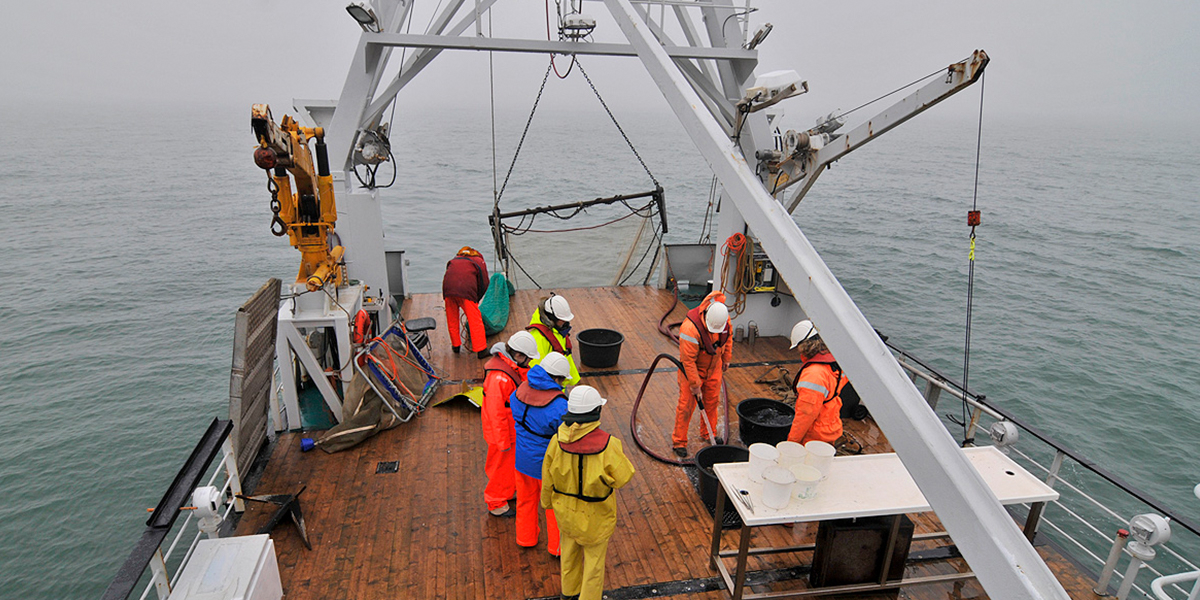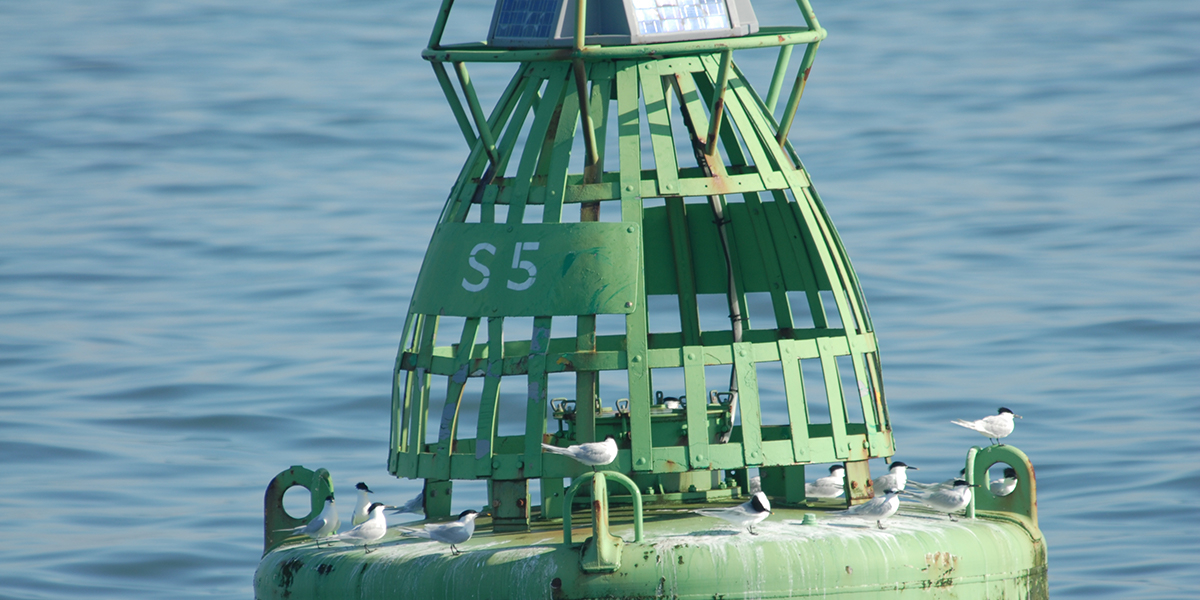Navigating the Wadden Sea
'Ships navigating the North Sea will get nervous with any depth less than three metres under the keel; in the Navicula we often travel with only 30 cm (or less) beneath the ship…’
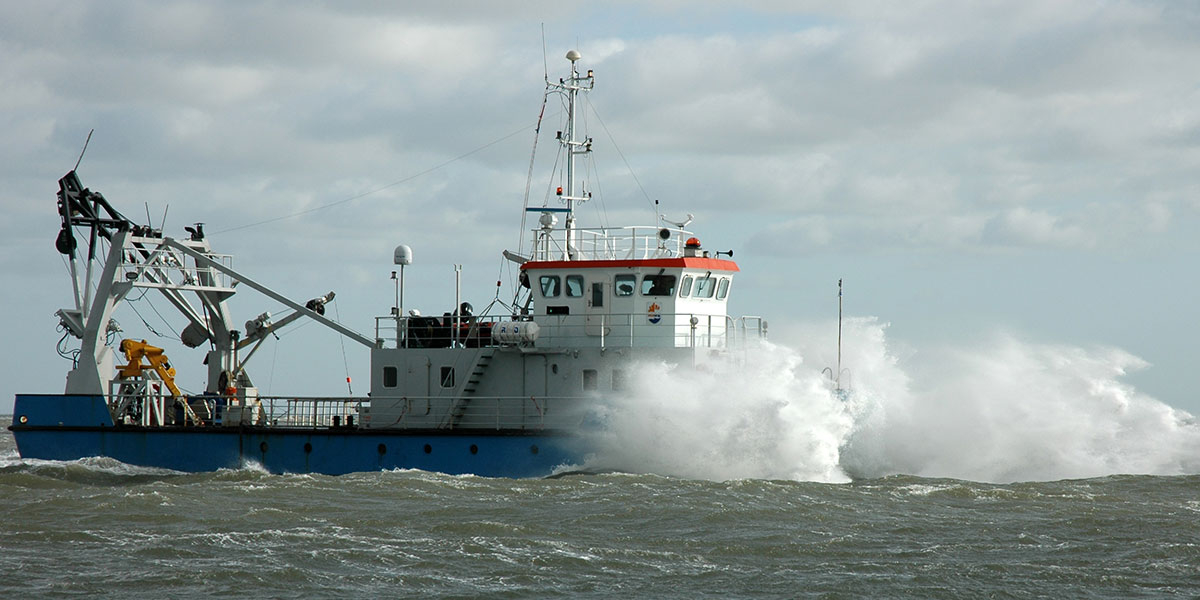
Fieldwork has something magical
I’m very lucky; with a love for water, mud, birds, whales, and ships, my work at the Royal NIOZ is for the most part very enjoyable. Aboard the research vessel the Navicula, I sail the coastal waters of the North Sea and Wadden Sea. An interesting mix of researchers, PhD students and other students from many different nationalities, plus the accompanying knowledge come aboard the Navicula. Fieldwork has something magical about it; most people are very enthusiastic and deeply impressed by the North Sea coastline and the Wadden Sea. I can deeply relate to this, though of course being desensitised by ‘business as usual’ does mean that the special surroundings can sometimes seem very normal to me.
Nevertheless, it is fantastic to see the first sandwich terns of the season arriving at the Wadden Sea. You first come across them on buoys in the North Sea. They are on their migration northwards from their overwintering grounds in West Africa. The familiar screeching sounds immediately ring in the onset of spring weather or not the weather reflects it. For those who regularly visit the mudflats and listen out, this is an unmistakable and very distinctive sound.
We were recently returning aboard the Navicula from a survey conducted near the coast of IJmuiden back to the NIOZ port. Off the Petten coast I saw large groups of common scoters. In addition, four porpoises were swimming and the first small groups of sandwich terns were in the air, along with dozens of little gulls. It was amazing; one never gets bored of moments like that!
Navigating the RV Navicula
Navigating a ship in the Wadden Sea is a skill in its own right. Ships navigating the North Sea will get nervous with any depth less than three metres under the keel; on the Navicula we often travel with only 30 cm (or less) beneath the ship. The vessel has a shallow draft and a flat bottom and is designed for working on the mudflats, so we often let it fall high and dry in order to maximise the quality of work being carried out and increase the proximity to research locations. We also have good anchoring gear so that we can stay on site during bad weather conditions, which saves us long transits to and from harbours and the associated fuel. It is always an impressive view to see a ship the size of the Navicula high and dry, and one can then walk all the way around it. Up-to-date information about the banks and channels as well as personal experience are therefore indispensable when sailing in the Wadden Sea.
Specific knowledge
Before I came to work at the NIOZ I worked at the Ministry of Agriculture, Nature and Food Quality for eight years, focusing on Wadden Sea policy and implementation. In the discussions around the use of the mudflats, it was often apparent that knowledge about and from the area is needed. A meaningful discussion must be based on accurate information, and specific knowledge is therefore required. The point in question is precisely what effects a particular activity such as recreation, gas extraction, or fishing will or will not have on the ecosystem, and to this end people ‘from the field’ are a vital link. It is a big challenge to keep all 16 million of us under control, especially with our drive for ‘bigger and better’. I see the Wadden Sea as a big nature playground, which can be used andand harvested to quite an extent. However, the challenge remains to control ourselves when it comes to our untiring thirst for more.
Bram Feij, RV Navicula
